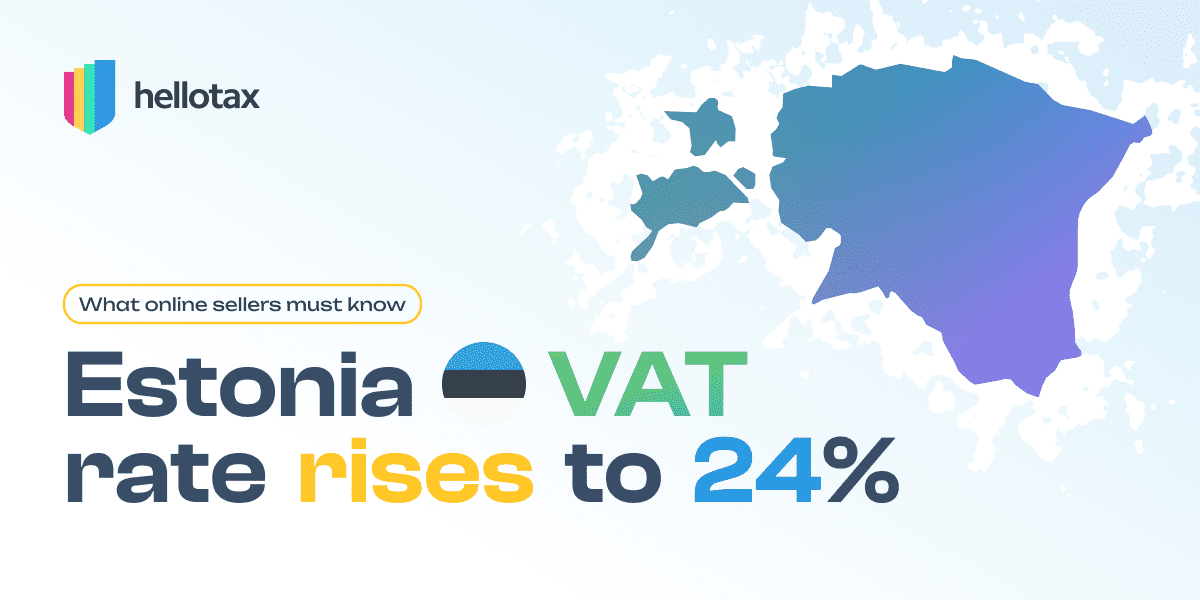Online sellers in Europe who are registered for VAT in Europe have to do regular filings and submit various reports on a regular basis. One of those reports is the EC Sales List (ESL) which is necessary to support the VAT return. In this article you find what it is, when and how you need to submit it and which deadlines there are.
Antonia Klatt
Last Updated on 29 October 2020
What is an EC Sales List?
The EC Sales List is a document all online sellers in Europe need to provide to give the tax authorities further insights on their sales and on their goods movements (and the movements of services) between EU member states. It is also called “Recapitulative Statement“
The aim is to avoid tax fraud, simplify VAT payments in Europe and make sure that VAT returns are correct.
Note: Make sure the relevant VAT IDs are registered with the VIES System!
When to complete an EC Sales List
There are several reasons that make completing an EC Sales List mandatory. You need to complete it when one of the following scenarios applies to you/your business:
- You have supplied any goods to another VAT-registered company in the EU
- You have filled in Box 8 in you VAT Return in the UK (you will received an ESL automatically)
- You have moved any of your own goods to a VAT-registered branch, office or subsidiary company that you own within the EU
- You have given a VAT-registered customer in an EU country a credit note for goods
- You have sold goods to a VAT-registered customer in an EU country and arranged for your supplier, who’s located in an EU country, to send the goods directly to your customer
- You have supplied services to a VAT-registered EU businesses and that business accounts for the VAT (this is the reverse charge)
What does the EC Sales List have to contain?
When it comes to administrative paperwork, it’s better to get it done sooner than later and filling in the ESL document is rather simple. Just make sure it contains the following pieces of information:
- Customer’s country code (2 letters)
- Customer’s VAT ID
- Details of the EU Customer
- Value of the goods/services (use national currency!)
- Indicator Column: Shortcode to specify order (goods, services, etc.)

For all your transactions with other EU businesses that have a valid VAT number, you will need to fill in the required information.
What is the EC Sales List used for?
Basically, all sellers who are delivering goods or services to other EU businesses have to complete the EC Sales List and submit it to the respective authorities. That means that all intra-EC turnovers need to be reported.
As this report is all about goods movements, sellers can be affected who are not selling goods to other companies directly, but who are moving goods to their VAT-registered company branch in another country.
When suppliers in other EU countries take care of the shipping, e.g. Amazon with its warehousing and fulfilment network, this also has to be reported in the ESL.
Briefly speaking, an EC Sales List is required if:
- Goods are supplied to VAT-registered companies in other EU countries
- Credit notes for goods are provided to VAT-registered companies in other EU countries
- Services are supplied to a VAT-registered company which account for the VAT
- Goods are moved to own VAT-registered branches or subsidiaries in other EU countries.
How to submit the ECL?
There are two ways in which you can submit your report: either electronically or by post.
Either way, you get the template form directly from the tax authorities. Please note that there have been some adjustments in several countries lately, so “old” form might not be up-to-date anymore.
In most countries call-of-stock information can exclusively be filed electronically. If that should not be possible for some reason, please contact us or get directly in touch with the respective tax authorities.
Note: Providing the ECL online or via paper form also has an impact on the deadlines for submission. More about that later.
How to send your EC Sales List online to the HMRC
You can decide whether you want to send your ECSL online or by post. If you decided for the online submission, it basically start with choosing on of the following formats:
- ECSL as an on-screen form, similar to the paper EC Sales List
- ECSL ‘bulk upload’ feature as a CSV or XML file
- UN-EDIFACT format submissions
If your EC Sales List includes the cross-border movement of goods or changes of intended customer under the call-off stock arrangements, you only can go for option 1 and 2 above.
You can either send HMRC:
- a full EC Sales List that includes movements of call-off stock or changes to previously submitted call-off stock information, through one of the above channels
- 2 EC Sales Lists – one with your EC Sales only, through your usual channel, and the other with movements of call-off stock, or changes to previously submitted call off stock information, through one of the above channels
>>Official Guide<< for submitting EC Sales List declarations online using CSVs.
In case you are already a registered user of the online service of the HMRC, simply enrol for EC Sales List online.

When should I send an EC Sales List?
The deadlines vary from country to country, as you will see in the next chapter. In the UK for example, the EC Sales List needs to be sent to the HMRC (the British tax authorities) and it needs to be provided at the end of each calendar quarter when sales have been made to a EU country during that calendar quarter.
If there were no services provided within that period of time, an EC Sales List is also not required. Following the rule above, the deadlines for the UK look like this:
| Quarter | Paper form (date of receipt) | Electronic form |
| 1 January – 31 March | 14 April | 21 April |
| 1 April – 30 June | 14 July | 21 July |
| 1 July – 30 September | 14 October | 21 October |
| 1 October – 31 December | 14 January | 21 January |
EC Sales List Deadlines for submission
The EC Sales List has a different name in almost every European country and as different as the names are, as different are the deadlines for submission. You can submit EC Sales List on a monthly or quarterly basis – usually this happens monthly.
In the United Kingdom, the following deadlines for the submission of the EC Sales List have to be kept in mind:
- within 14 days for paper submissions
- within 21 days for online submissions
If you send the EC Sales List in late, you may have to pay a penalty. For the 7 countries with Amazon warehouses, the deadlines for the online submission are the following:
| Country | Deadline for submission |
| Czech Republic | 25th day of the following month |
| France | 10th working day of the following month |
| Germany | 25th day of the following month |
| Italy | 25th day of the following month |
| Poland | Submission online: 25th day of the following month Submission by paper: 15th day of the following month |
| Spain | 20th day of the following month |
| United Kingdom | 21st of the following month |
In some countries, e.g. in Italy, the Intrastat and the ESL/ESPL have to be submitted together. For the rest of EU member states, the following dates of submission have to be kept in mind.
| Country | Deadline for submission |
| Austria | Last working day of the following month |
| Belgium | 20th day of the following month |
| Bulgaria | 14th day of the following month |
| Croatia | 20th day of the following month |
| Cyprus | 15th day of the following month |
| Denmark | 25th day of the following month |
| Estonia | 20th day of the following month |
| Finland | 20th day of the following month |
| Greece | 26th day of the following month |
| Hungary | 20th day of the following month |
| Iceland | – |
| Ireland | 19th day of the following month |
| Latvia | 20th day of the following month |
| Lithuania | 25th day of the following month |
| Luxembourg | 25th day of the following month |
| Malta | 15th day of the following month |
| Netherlands | Last working day of the following month; for non-established companies it’s the last working day of the second month |
| Norway | – |
| Portugal | 20th day of the following month |
| Romania | 25th day of the following month |
| Slovakia | 25th day of the following month |
| Slovenia | 20th day of the following month |
| Sweden | Submission online: 25th day of the following month Submission by paper: 20th day of the following month |
| Switzerland | – |
Note: If due dates fall on a weekend or public holiday, the date gets delayed to the next working day.

Book a free consultation
Our VAT experts are happy to help you. Book a free consultation today!
How often to submit your EC Sales List
The best tip we can give you is to check (or ask us) what the best solution is in the respective country you need. If on rule is the same in the EU when it comes to e-commerce, it is that there is no one rule which always applies. Regulations differ from country to country and therefore, it makes sense to check each case individually.
Usually, these Recapitulative Statements have to be submitted on a monthly/quarterly basis. The following table covers supplies to VAT-registered customers in EU countries using the example of the UK.
| Your business supplies | Value of the supplies | Send your EC Sales List |
|---|---|---|
| Goods | Over the £35,000 threshold in current or 4 previous quarters | monthly |
| Goods | Under the £35,000 threshold in current or 4 previous quarters | quarterly |
| Services (with Reverse Charge) | Not applicable | quarterly (or monthly if you want) |
| Goods/Services where you are required to send monthly lists for your goods | Not applicable | monthly for goods; quarterly for services |
In the UK, when submitting the VAT return to the HMRC on an annual basis, it is possible to also submit the EC Sales list on an annual basis. For this, the following criteria has to be met:
- total annual taxable turnover is not more than £145,000
- annual value of supplies to EU countries is not more than £11,000
- sales do not include new means of transport
Simplified ESL
Under certain conditions, businesses can submit simplified ECLs. This is the case when a business does not have many cross-border transactions in Europe and is mainly active within a specific country.
When providing this simplified version, the actual value of supplies to each customer doesn’t need to be entered and it only needs to be completed once a year.
Businesses need to meet certain criteria to be eligible for the simplified ESL. This includes certain limits for revenues and the annual turnover and has to be checked for each EU member state individually.
Let’s continue with the example of the UK, here the following criteria has to be kept in mind if you want to apply for a simplified ESL:
- supplies to other member states do not exceed a certain threshold limit, in the UK it is £11,000,
- no new means of transportation are used
- and if the total taxable turnover within a calendar year does exceed the respective VAT registration threshold plus £25,500, again this is for UK and varies from country to country.





